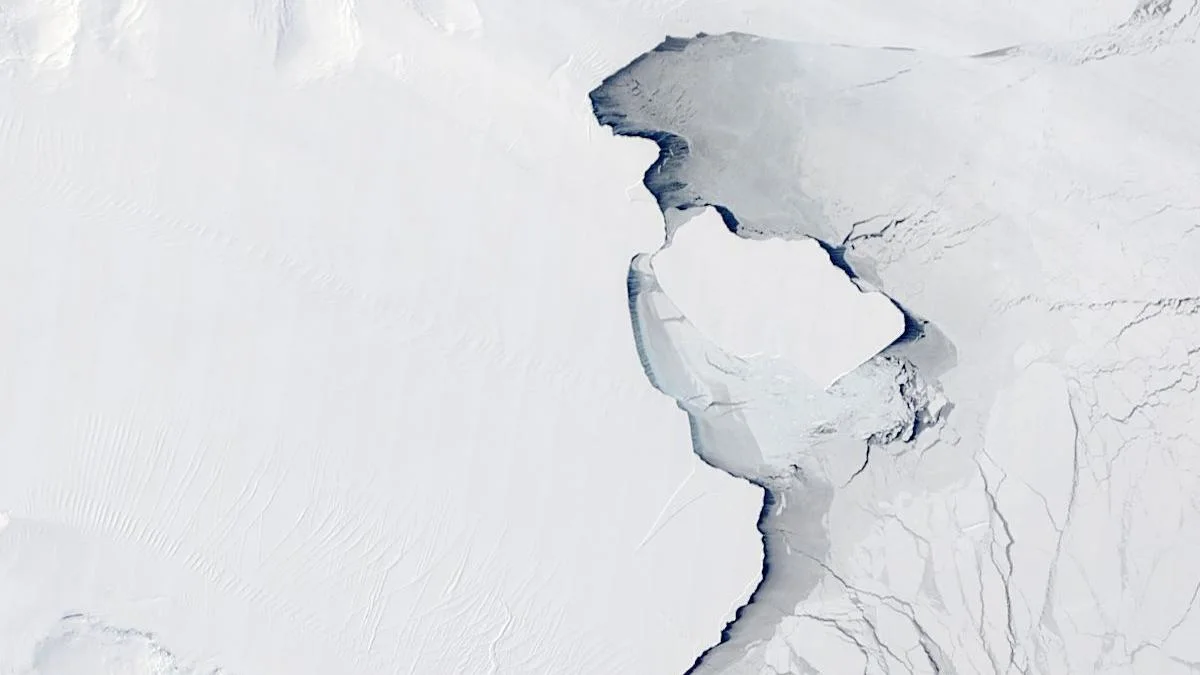
Iceberg nearly 3x the size of Toronto just broke off Antarctica
'Molar berg' is the first major calving event this Antarctic ice shelf has had since the 1960s
A massive iceberg has split away from Antarctica, and Earth-orbiting satellites captured the whole thing.
Sometime during the day between September 24 to 25, 2019, a 315 gigaton iceberg calved off from the Amery Ice Sheet, along the coast of eastern Antarctica.
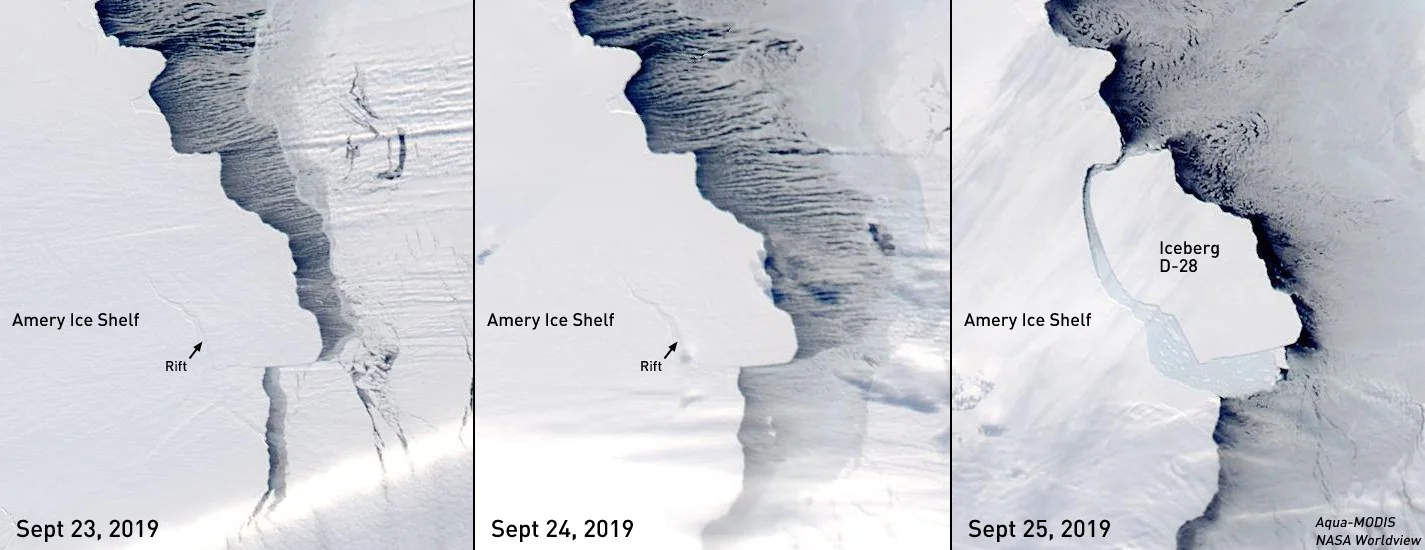
Imagery from the MODIS instrument on NASA's polar-orbiting Aqua satellite, shows the Amery Ice Sheet from September 23-25, 2019, and the calving of newly-formed iceberg D-29. Credit: NASA Worldview/Scott Sutherland
With an area of 1,636 square kilometres, this iceberg - now dubbed D-28 and nicknamed the "Molar Berg" - is nearly three times the size of the City of Toronto!
At around 210 metres thick, it would dwarf all but the tallest handful of buildings in the city's core, and would even reach up two-fifths of the height of the CN Tower!

The Amery Ice Shelf as imaged by the MODIS instrument on NASA's polar-orbiting Terra satellite, on Oct 1, 2019. Credit: NASA Worldview/Scott Sutherland
According to Helen Amanda Fricker, a glaciologist with the Scripps Institution of Oceanography, she had been waiting since 2002 for the Amery Ice Shelf's "Loose Tooth" to come out finally.
When D-28 calved off in September, however, it was more than was expected.
"This iceberg is NOT the Loose Tooth," Fricker tweeted on Monday. "It is a larger piece of ice (the size of Scotland's Isle of Skye) to the west of LT. It is like expecting a baby tooth to come out, and instead out comes a molar."
Identified in 2001 and 2002, Amery's 'Loose Tooth' was a projected 625-square-kilometre iceberg that was supposed to calve off when two rifts identified in satellite imagery finally grew enough to link up.
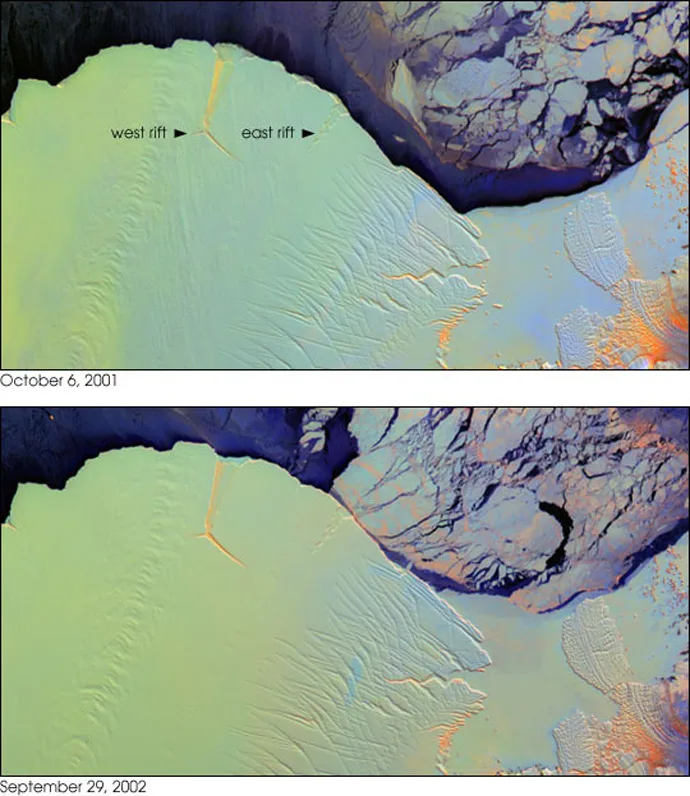
Images of the 'Loose Tooth' from 2001 and 2002 taken by the multi-angle imaging spectroradiometer (MISR), onboard the Terra satellite. Credit: NASA Earth Observatory
Iceberg D-28 (or "Molar berg" as Fricker has called it) is over twice the size of the Loose Tooth, though!
IS THIS CLIMATE CHANGE?
There have been several stories of large icebergs calving off from Antarctica in recent years. Some of these - especially when Iceberg A-68 broke away from the Larsen C Ice Shelf in July of 2017 - have raised concerns about the accelerating effects of climate change in that remote part of the world.
A-68 was of specific concern because we had already witnessed the accelerated breakup of the Larsen A and Larsen B ice shelves, farther to the north along the Antarctic Peninsula. A-68's calving was potentially heralding another loss.
By comparison, however, the calving of D-28 is not raising any alarms with scientists.
According to Fricker, this iceberg breaking away from the ice shelf is not due to climate change. It is merely part of the normal, healthy cycle of ice loss for this ice shelf. She also said that, for the Amery Ice Shelf, this kind of calving event takes place every 60-70 years.
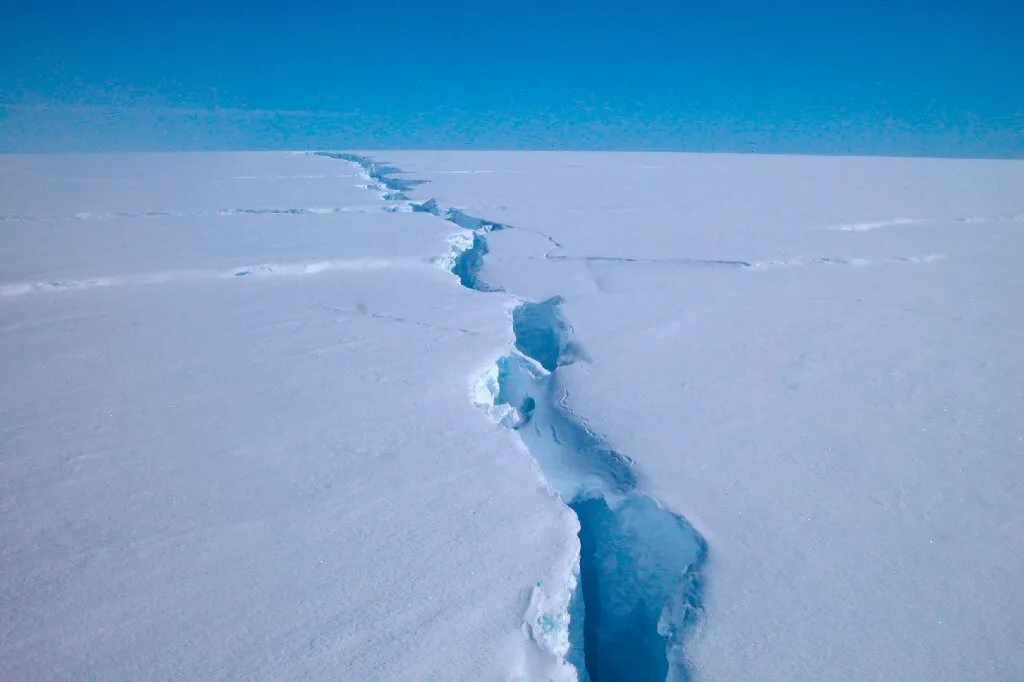
This image shows one section of the rift that was forming Amery Ice Shelf's 'Loose Tooth'. Credit: Australian Antarctic Division
The loss of Antarctica's ice sheets is of great concern because the vast majority of that ice rests directly on the hard bedrock of the Antarctic continent.
When any ice resting directly on land melts, and the water from it pours into the ocean, it has a direct contribution to sea level rise.
Ice shelves are different. The ice in an ice shelf sticks out over the water, extending away from the glacier or ice sheet on land. Any sea level rise from them took place a long time ago, when the ice first flowed down offshore and began displacing the seawater beneath it. So, even if a part of the ice shelf breaks away, the amount of seawater that piece displaces will not change. Thus, it will not contribute to sea level rise.
There is one complication to this, though. Fresh water icebergs melting into salt water oceans does cause a small amount of sea level rise.
This sea level rise is due to the different densities of fresh water and salt water. Since fresh water is less dense than salt water, if you have the same mass of both types of water, the fresh water will take up more space (more volume) than the salt water.
While an iceberg is frozen, its density is much lower than the density of the water it is floating on. Thus, even though the ice and the water displaced by the ice have the same mass, the volume of the ice is far greater. As a result, the ice sticks up above the water level, sometimes hundreds of metres into the air.
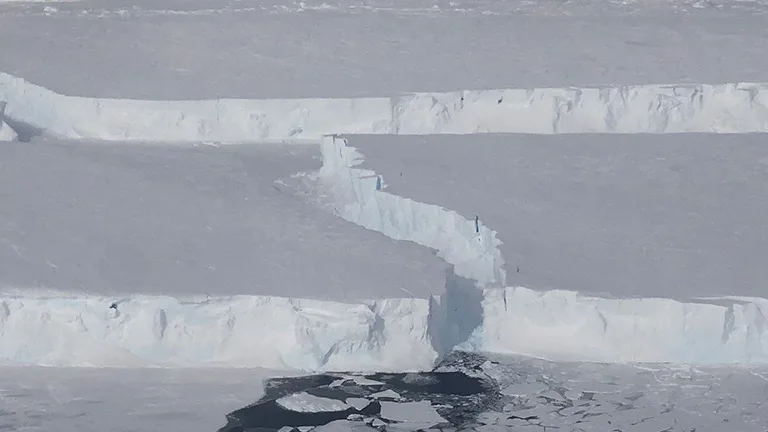
New sea ice forms in a rift created when the B-46 iceberg broke off from Pine Island Glacier. Credit: NASA/Kate Ramsayer
When that same iceberg floats into warmer waters and melts, it becomes an equal mass of fresh water, and it still displaces the same mass of salt water beneath it.
Since the density of the fresh water is still lower than the density of the salt water, though, the fresh water still occupies a greater volume than the salt water. So, just like the lower density ice did, the fresh water also 'sticks up' above the level of the salt water it is displacing.
This results in a measurable contribution to overall sea level rise.
The effect is small. Roughly a decade ago, researchers showed that it amounted to about a two and a half percent increase, compared to the salt water that is displaced.
Since it is essential to have an accurate accounting of the effects of climate change, we must know how this adds up with other sources of sea level rise, especially as we adapt to the changes we are already locked into at this point.
Sources: NASA Worldview | Helen Amanda Frisker | Scripps Institution of Oceanography | Smithsonian












